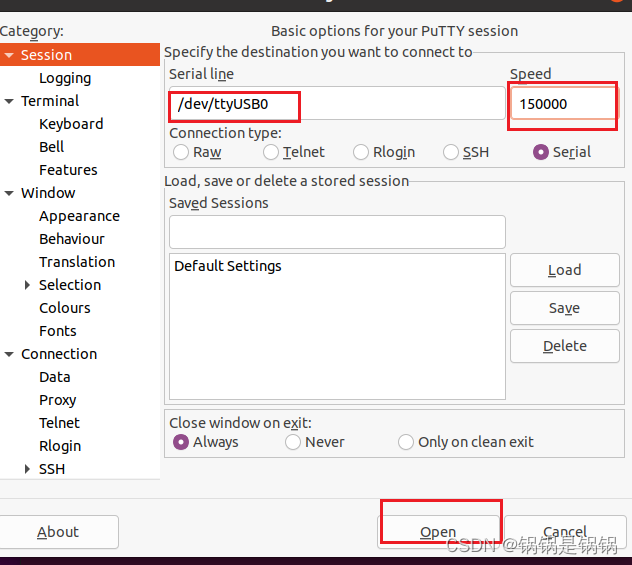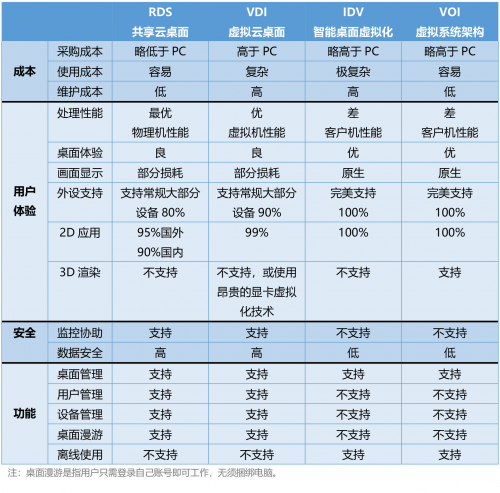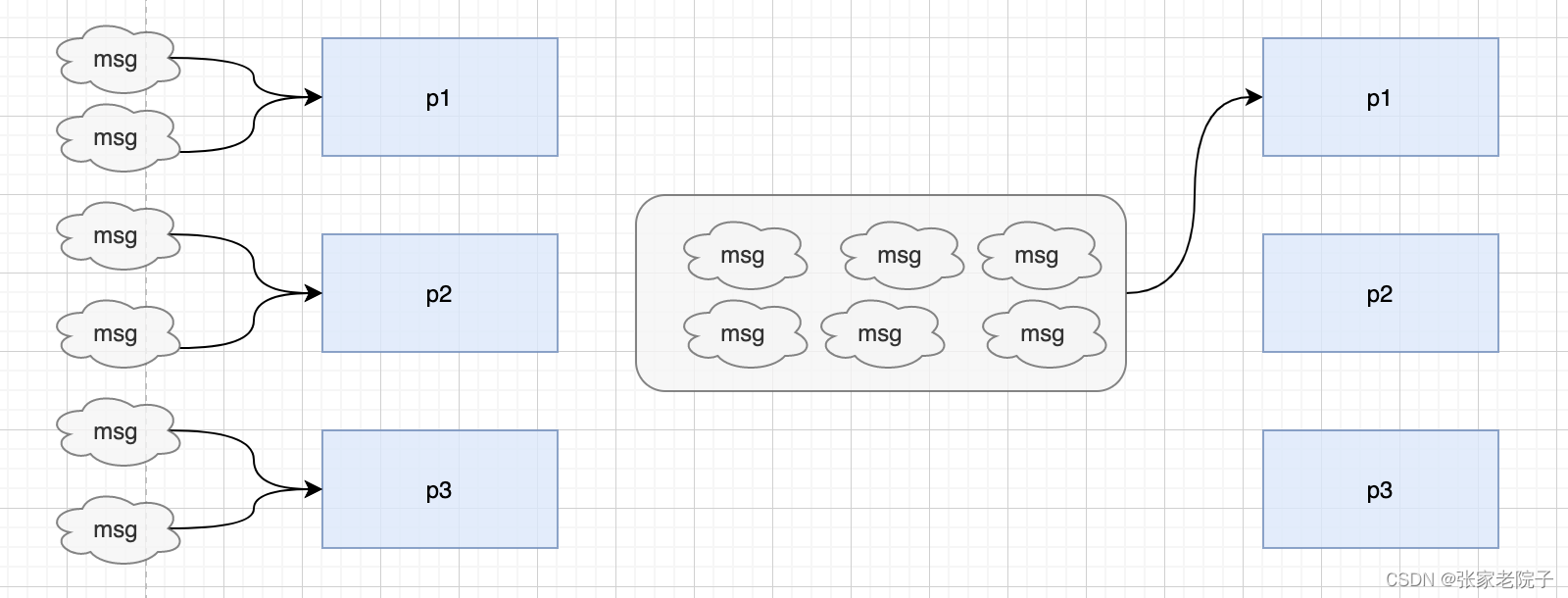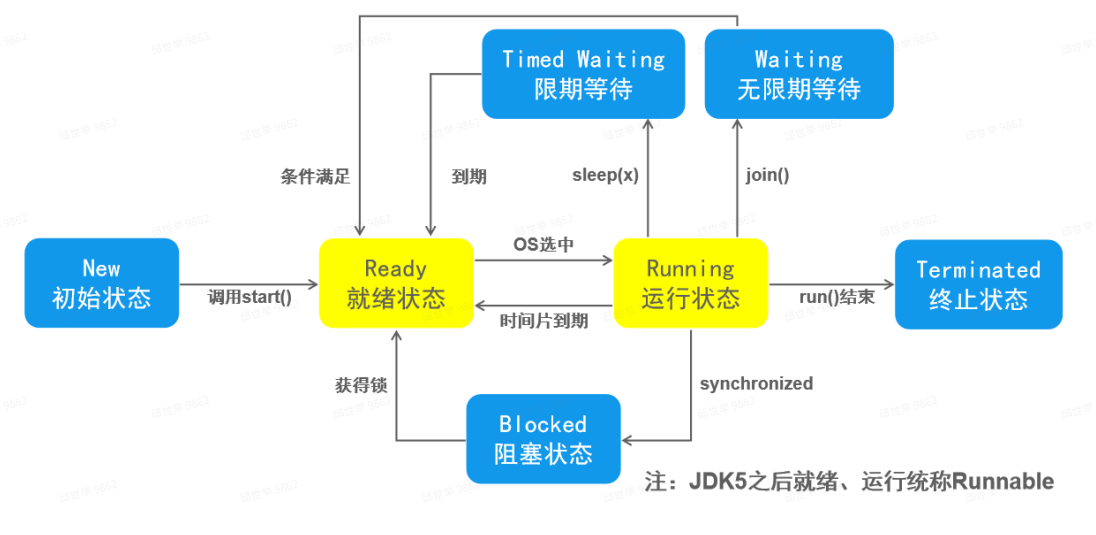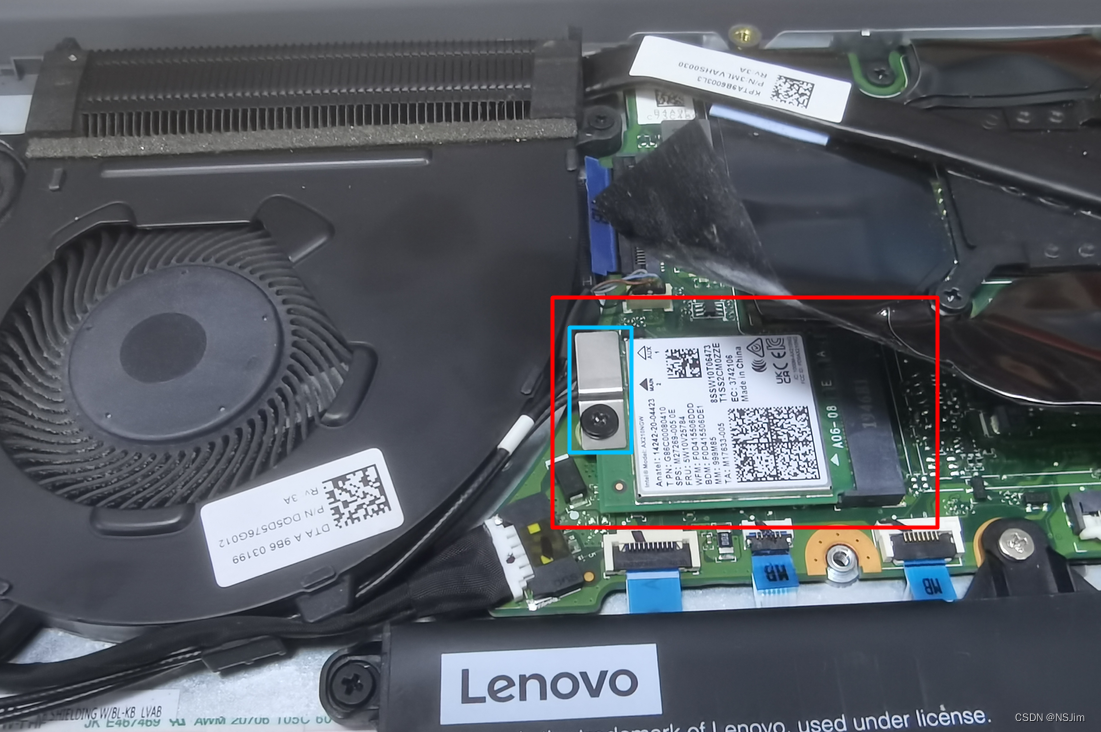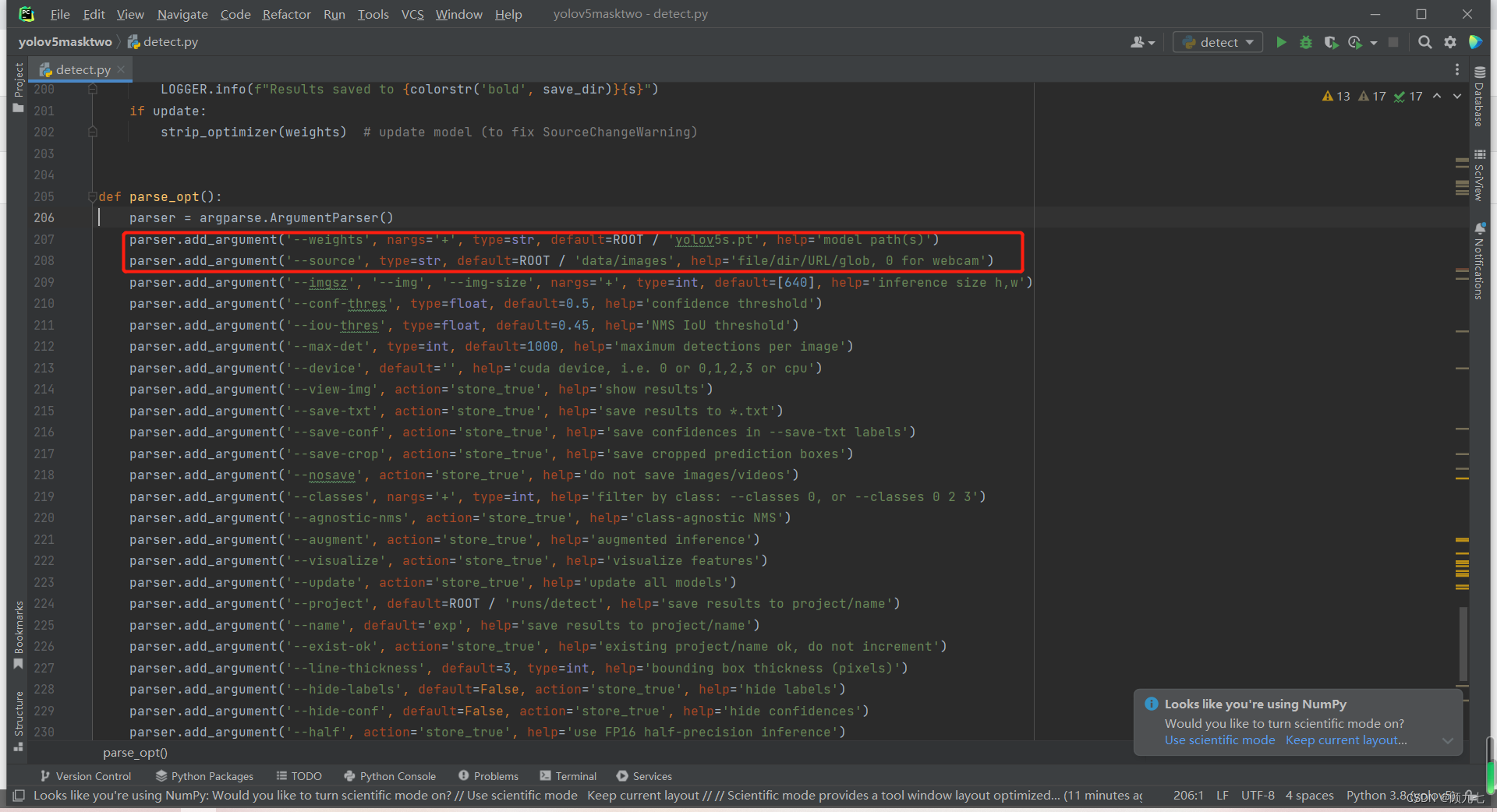文章目录
- 前言
- 一、历年真题
- 1.1 选择题
- 1.2 判断题
- 1.3 简答题
- 1.4 应用题
- 二、核心考点
- 2.1 软件工程概念
- 2.2 计算机科学和软件工程概念对比
- 2.3 考虑质量的三种方法
- 2.4 过程质量模型
- 2.5 系统组成元素
- 2.6 螺旋模型
- 2.7 关键路径法计算
- 2.8 风险管理
- 2.9 需求类型判断(根据例子选择需求类型)
- 三、选择填空题整理
- 3.1 第一章
- 3.2 第二章
- 3.3 第三章
- 3.4 第四章
- 3.5 第五章
前言
主要针对西安电子科技大学《软件工程概论》的核心考点进行汇总,包含总共11章的核心简答。
【期末期间总结资料如下】
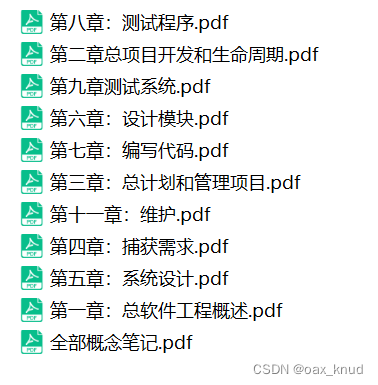
针对西电计科院软件工程专业的《软件工程概论》期末考试复习资料。大部分答案来自于课本与刘伟老师PPT,放心使用。
考试主要包括:选择题,判断题,简答题,应用题
(如需要《软件工程概论》期末全部笔记资料,可以联系邮箱oax_knud@163.com,资料非无偿,介意慎联系
其他资料参考:西电计算机专业课资料汇总
一、历年真题
1.1 选择题
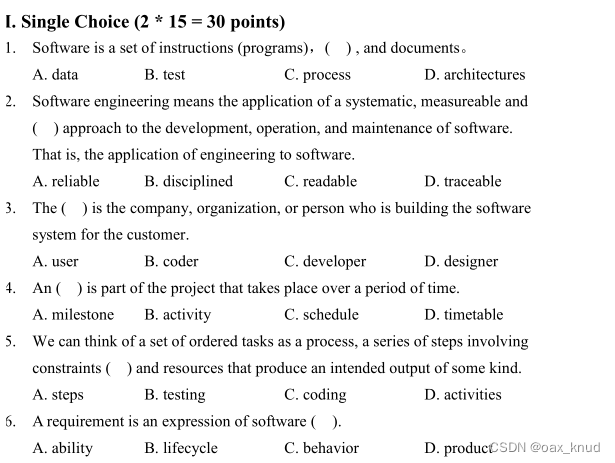
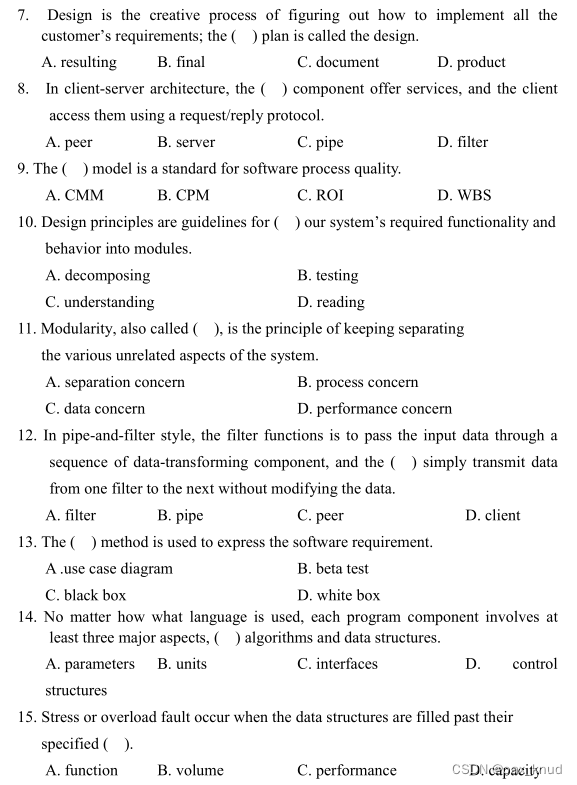
1.2 判断题
II. T(True) or F(False) (1*10 = 10 points)
- ( ) When the process involves building of some product we sometime refer to the process as life cycle.
- ( ) The critical path is a path that the slack time as every node is non-zero.
- ( ) DFD is used in the stage of software testing.
- ( ) Any work done to change the system after it is in operation is considered to be maintenance.
- ( ) In acceptance test stage, an in-house test is beta test, and the alpha test is out-house test.
- ( ) Software Requirement Specification is read by developer.
- ( ) Head Comment Block is a descriptive material written directly within code.
- ( ) Black-Box test methods are usually used to test program’s internal structures.
- ( ) A WHILE-DO construct do not wear out after 10000 loops, and the semicolons do not fall off the end of statement.
- ( ) In Bottom-Up integration test, we should write driver components
1.3 简答题
III. Questions (6 *5= 30 points )
1、 Describe the Waterfall model and its advantages and disadvantages.
2、 Briefly describe the functions of three core constructs of ERD (Entity Relation Diagram).
3、 Briefly describe functions of the Filer and the Pipe in Pipe-Filter architecture style, respectively.
4、 Give out the contents of Head Block Comment.
5、 Briefly describe the concept of corrective maintenance.
1.4 应用题

2、Figure 2 is the flow chart of a component. Give out the test case for the branch test.
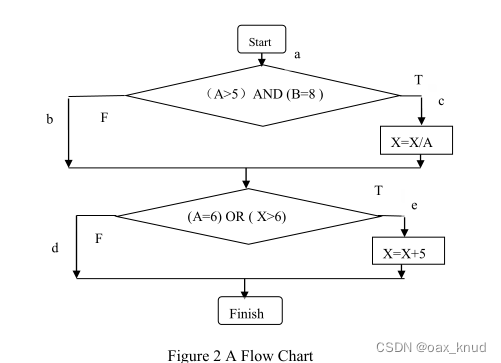
3、Figure 3 is the control flow of a component. Find out all the paths of path testing.

二、核心考点
2.1 软件工程概念
- Method:技术,产生结果的过程
- Tool:用于以更好的方式完成某事的仪器或自动化系统
- Procedure:生产产品的工具和技术的组合
- Paradigm:构建产品的哲学或方法(例如,面向对象与结构化方法)
软件工程师使用 工具、技术、过程和范型提高软件产品质量
2.2 计算机科学和软件工程概念对比
- Computer science: focusing on computer hardware, compilers, operating systems, and programming languages
- Software engineering: a discipline that uses computer and software technologies as a problem-solving tools(软件工程:使用计算机和软件技术作为解决问题的工具的学科)
关系:
软件工程:使用计算机和软件技术作为解决问题的工具的学科。
计算机科学:研究计算机结构和理论以及计算机功能的学科。
软件工程是计算机科学的一部分,因为软件工程师应用计算机科学研究的成果来构建工具和技术以满足客户的需求。
2.3 考虑质量的三种方法
考虑质量的三种方法
The quality of the product 产品质量
The quality of the process 过程质量
The quality of the product in the context of the business environment 商业环境背景下的产品质量
2.4 过程质量模型

2.5 系统组成元素
- 活动:是事件的触发器(发生在系统中的某些事情,通过改变特性将一个事物转变为另一个事物(例如数据元素的位置,取值的改变))
- 对象:活动中涉及到的要素(例如具有固定格式的个人信息记录;也可以是独立存在的个体;或者某个类型的特殊化实例)
- 关系:定义对象和活动之间的交互
- 系统边界:决定了一组输入的来源和输出的目的地
2.6 螺旋模型
1、核心思想
螺旋模型是一种演化软件开发过程模型。 螺旋模型最大的特点在于引入了其他模型不具备的风险分析,使软件在无法排除重大风险时有机会停止,以减小损失。同时,在每个迭代阶段构建原型是螺旋模型用以减小风险的途径。
2、优点
(1)对可选方案和约束条件的强调有利于已有软件的重用,也有助于把软件质量作为软件开发的一个重要目标。
(2)减少了过多测试或者测试不足带来的风险。
(3)维护只是模型的另一个周期,因此在维护和开发之间并没有本质区别。
3、缺点:要求开发人员必须具有丰富的风险评估经验和专门知识
2.7 关键路径法计算
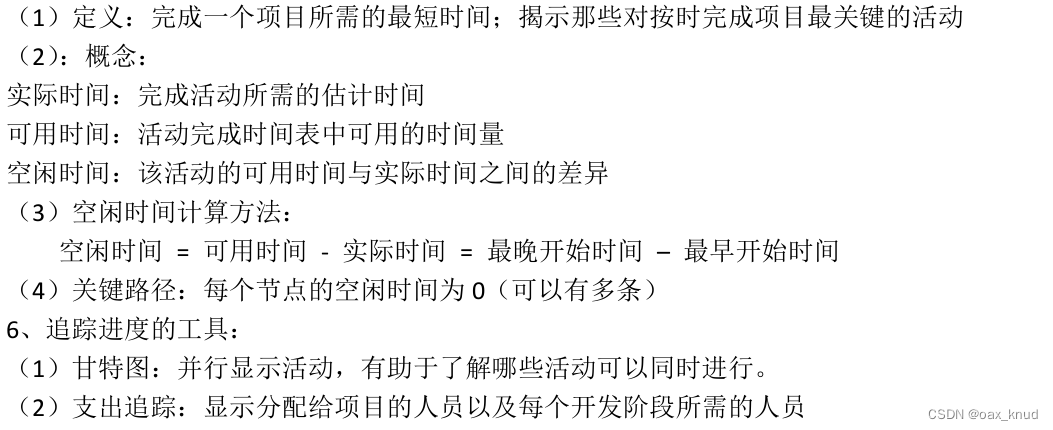
2.8 风险管理
- 风险影响:风险所产生的损失,对项目产生了一定的负面影响,如时间,质量,金钱,控制以及理解的损伤等
- 风险概率: 风险发生的概率
- 风险控制:风险控制就是降低或消除风险采取的行动
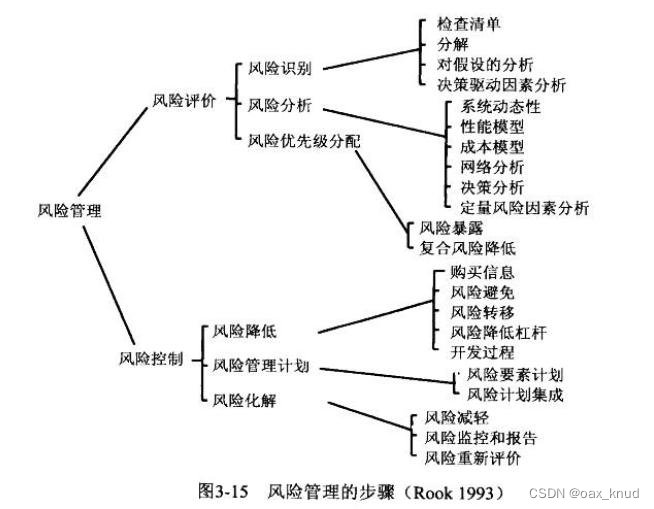
2.9 需求类型判断(根据例子选择需求类型)
- 功能需求:根据所需活动描述所需行为,实现定义解空间的边界。
- 质量需求或非功能性需求:描述软件必须具备的一些质量特性,实现对解空间进行消减。
- 设计约束:设计决策,例如平台或接口组件的选择
- 过程约束:对可用于构建系统的技术或资源的限制
三、选择填空题整理
【整理了一部分填空题,填空题可能会以选择题形式出现,填空的部分作为选项题的正确选项】
3.1 第一章

3.2 第二章
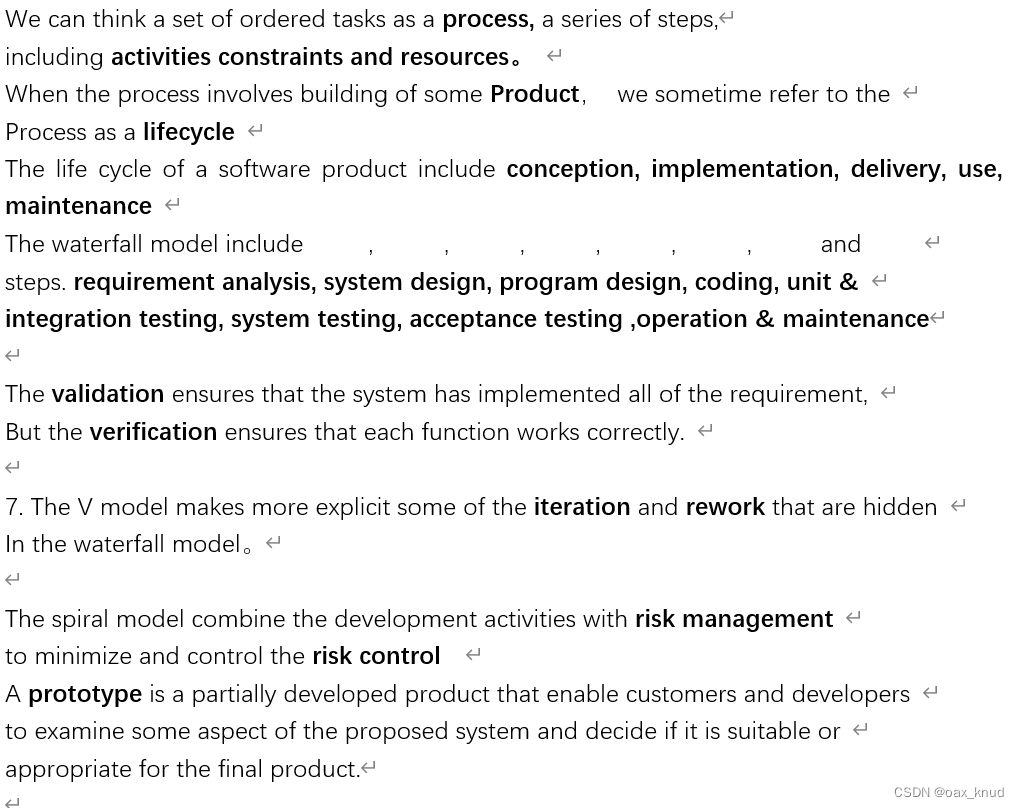
3.3 第三章


3.4 第四章
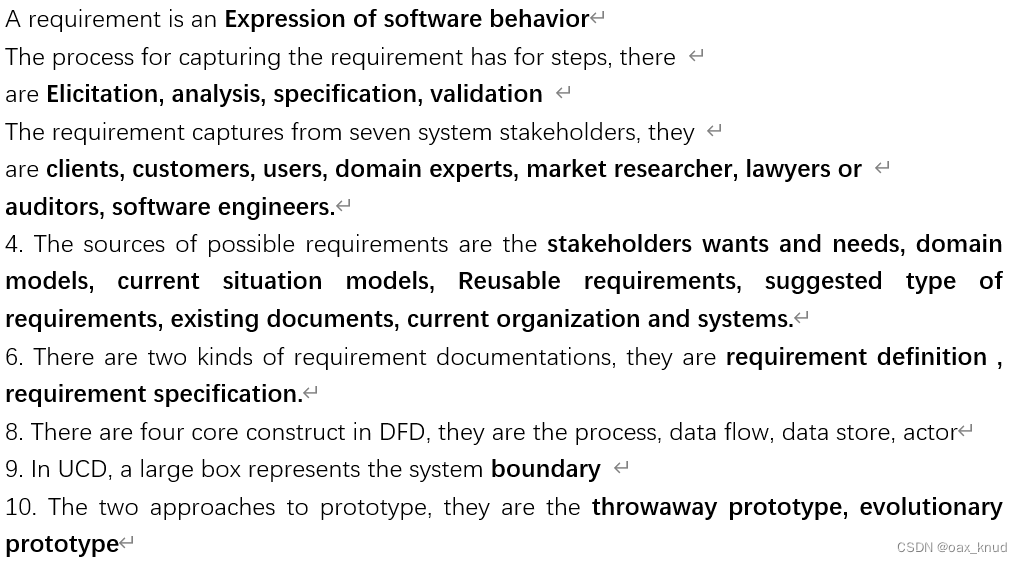
3.5 第五章
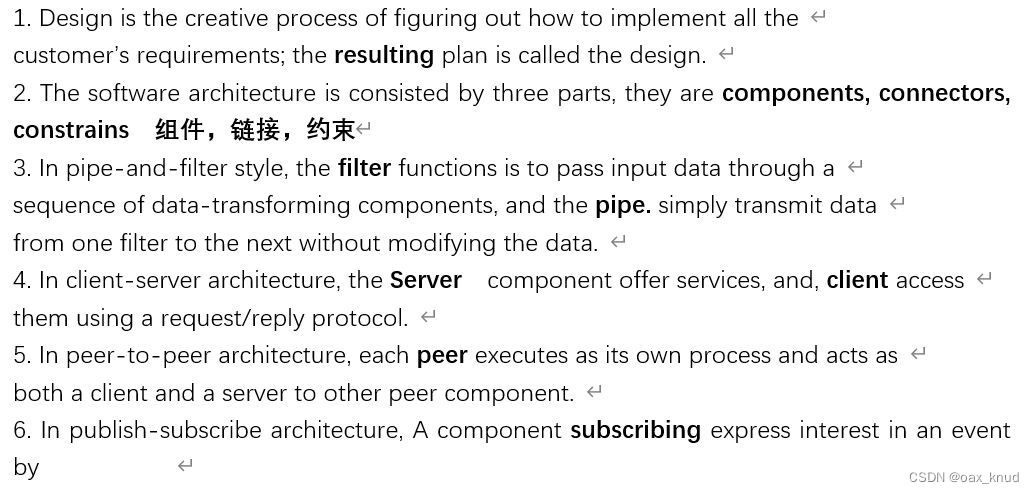

(以后有空继续补充

